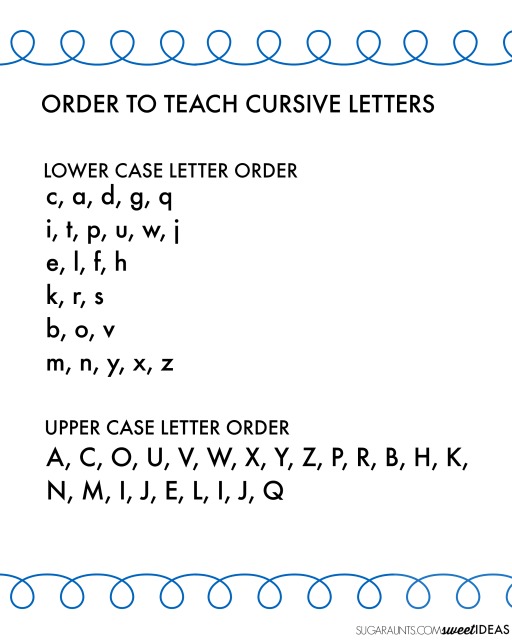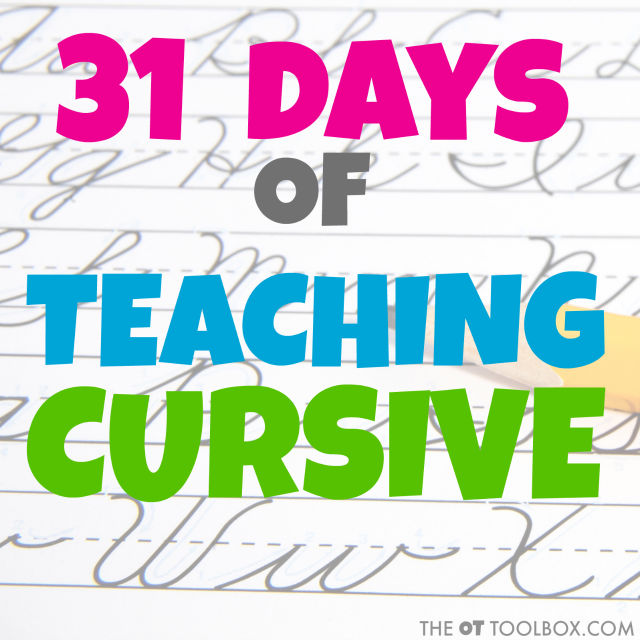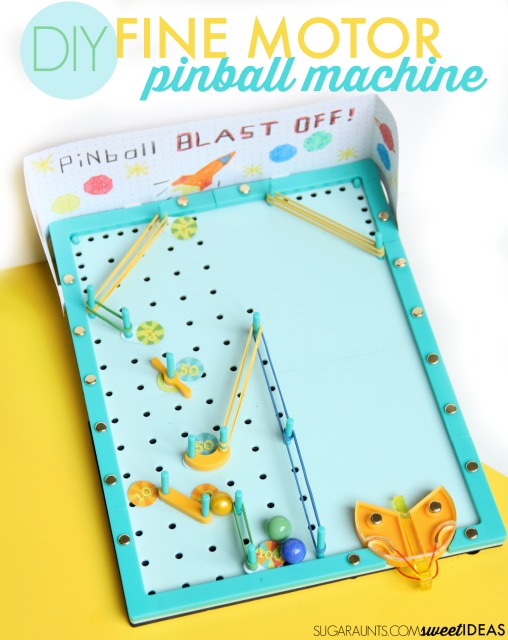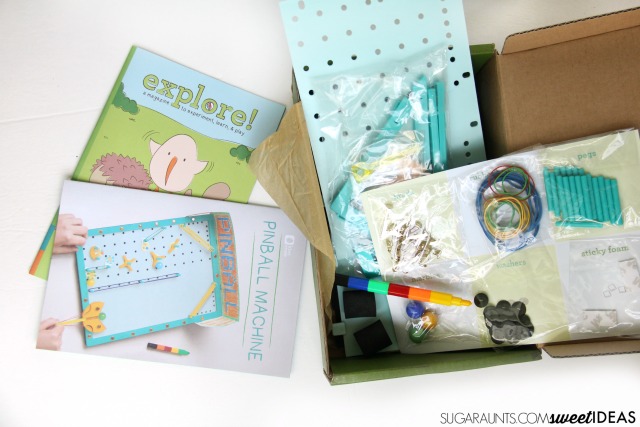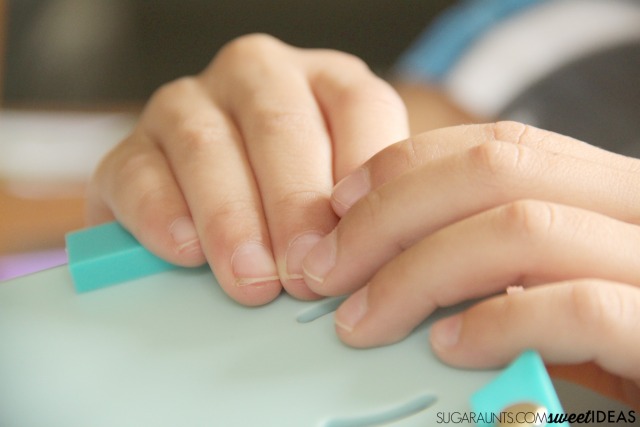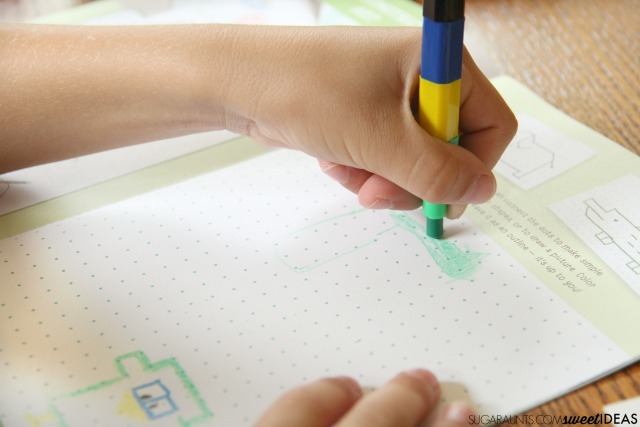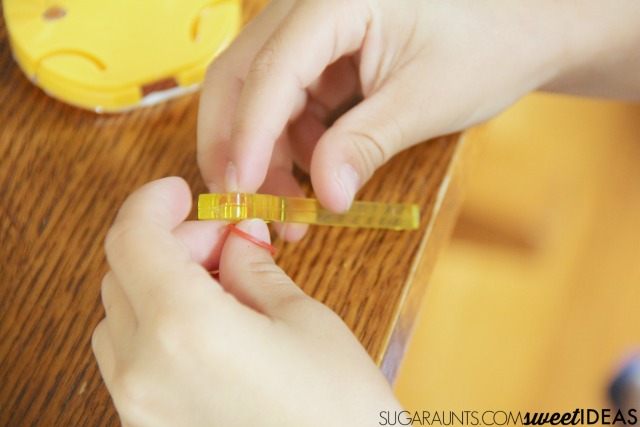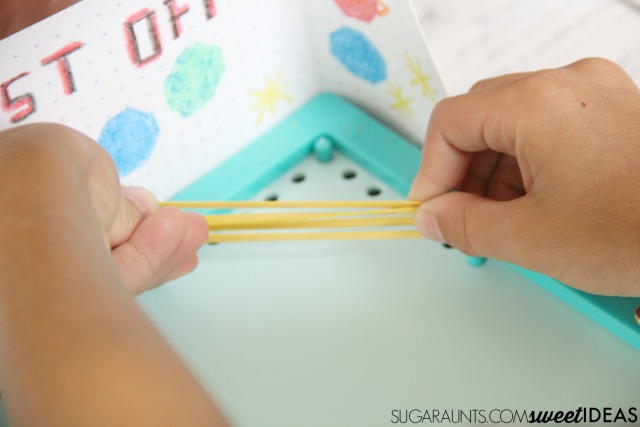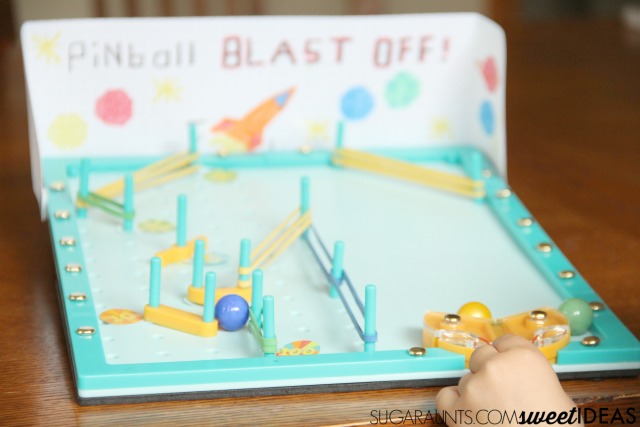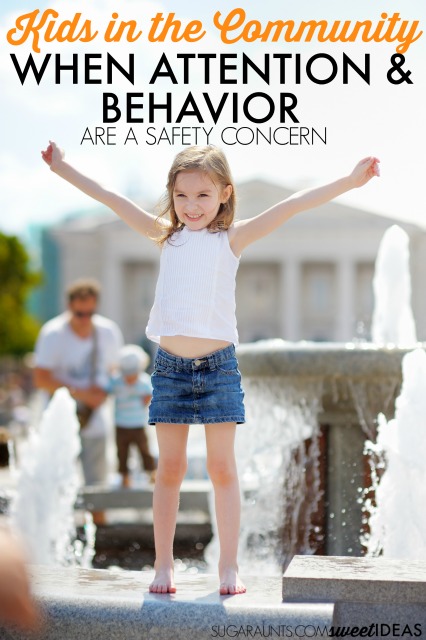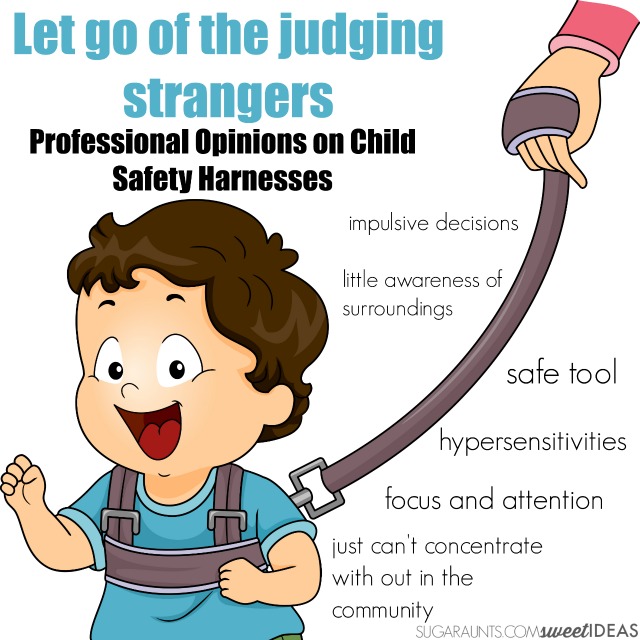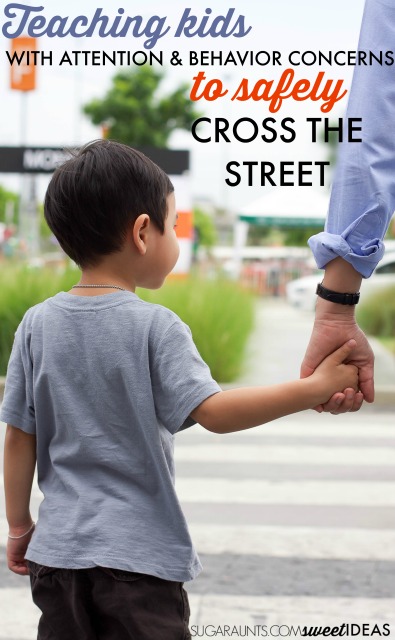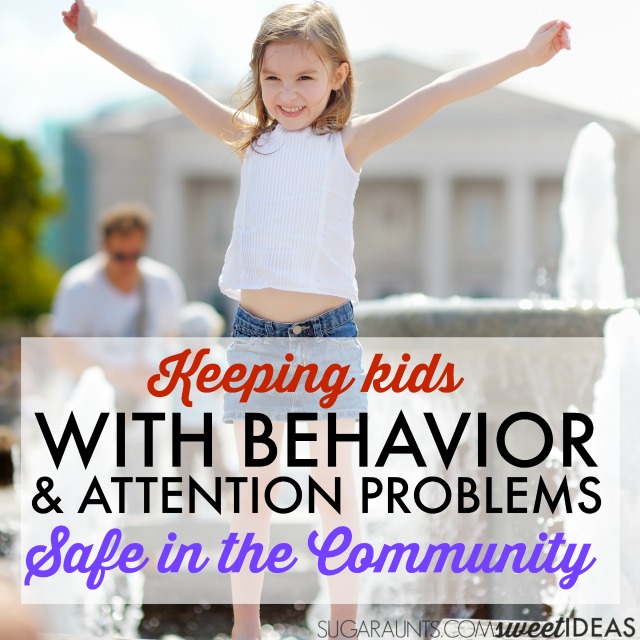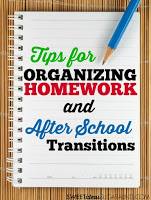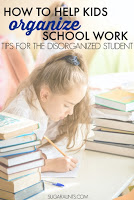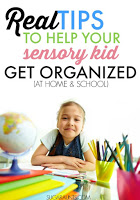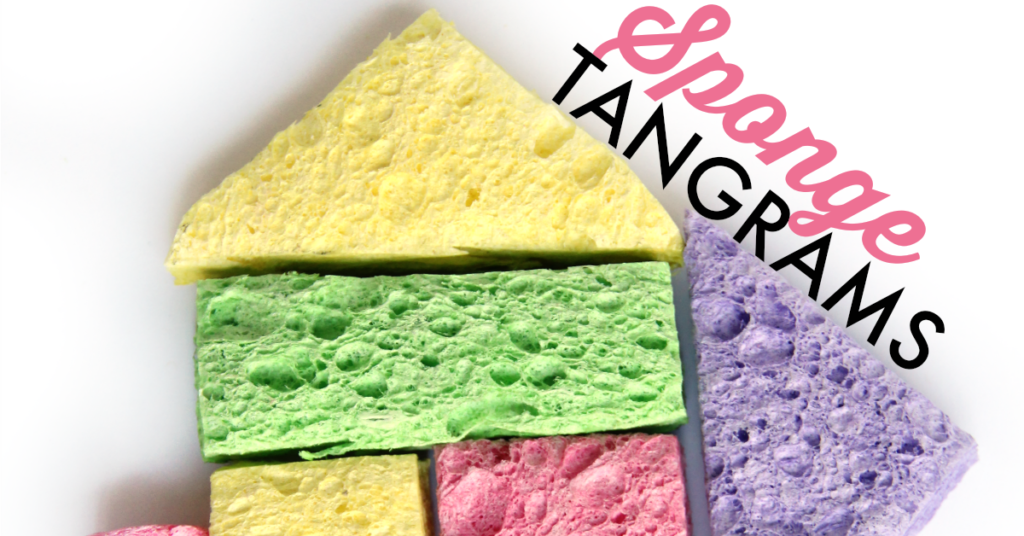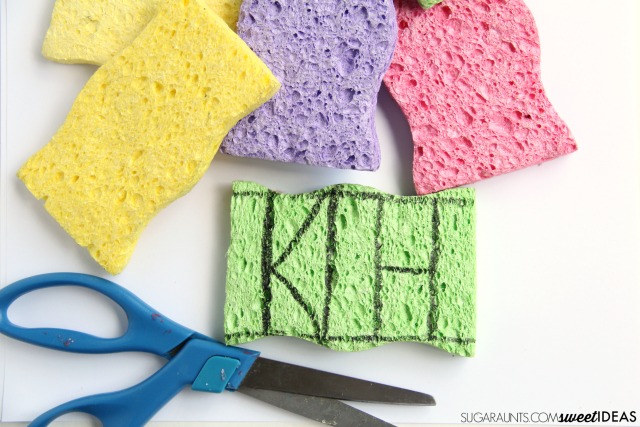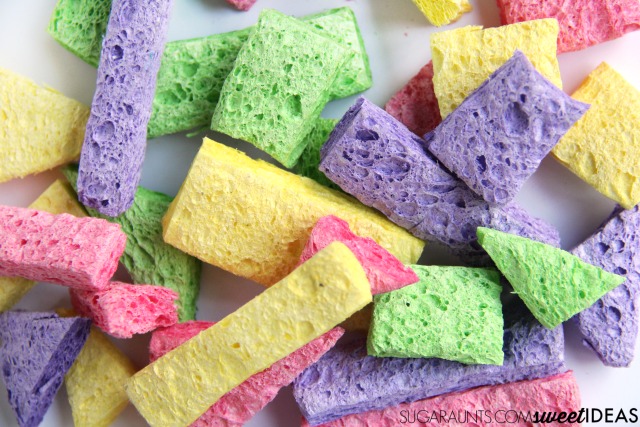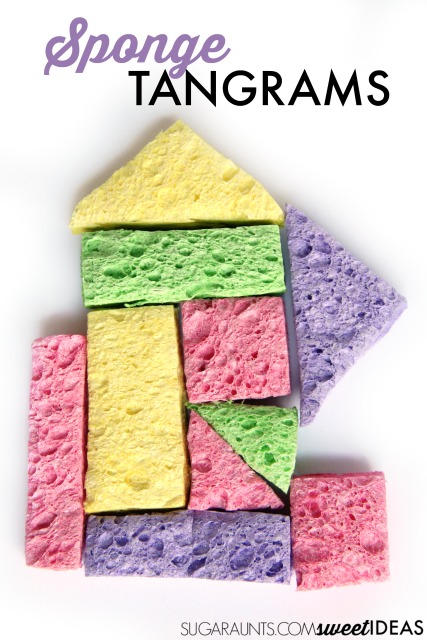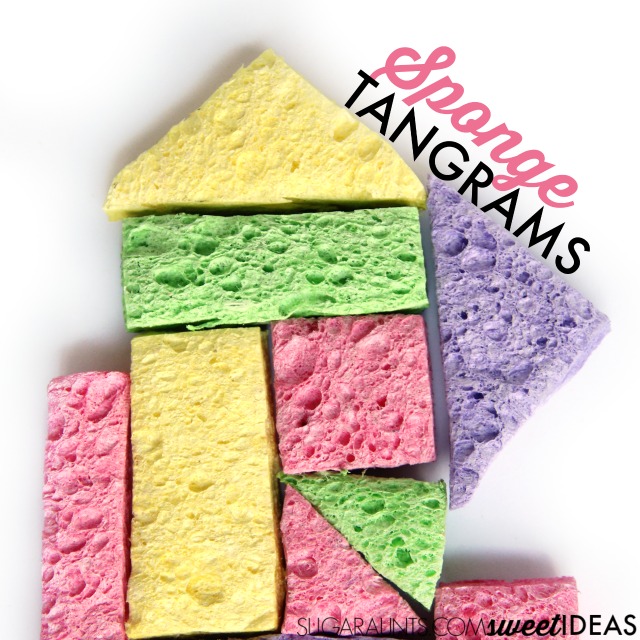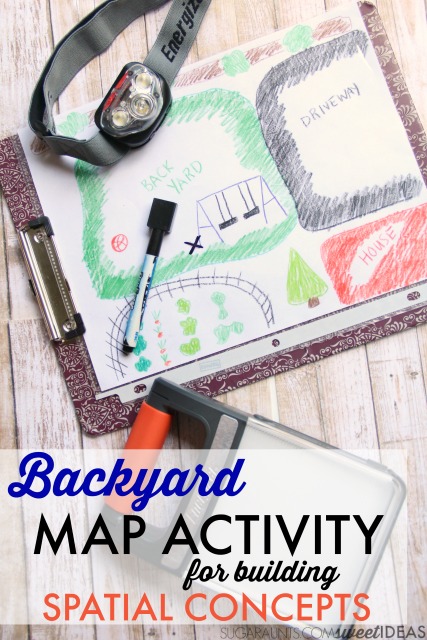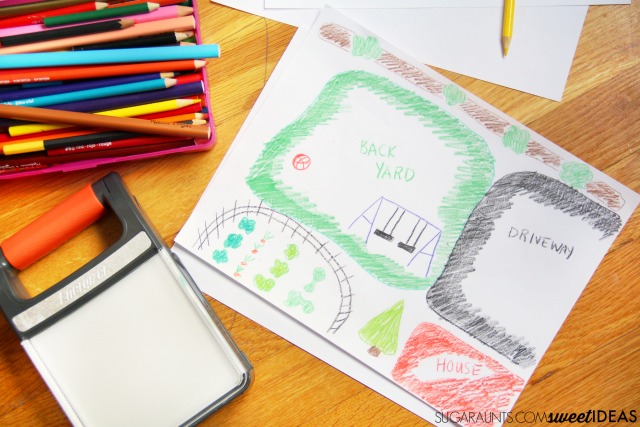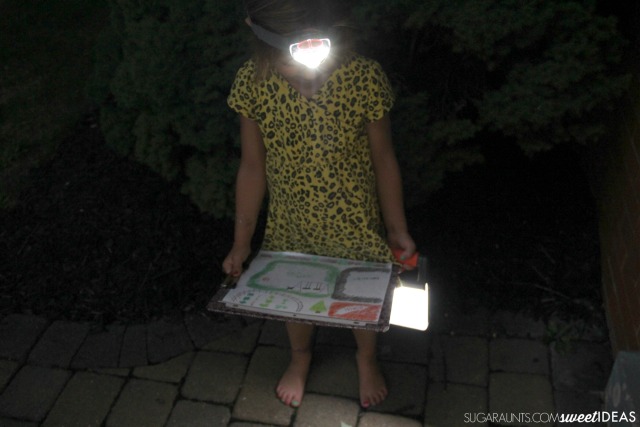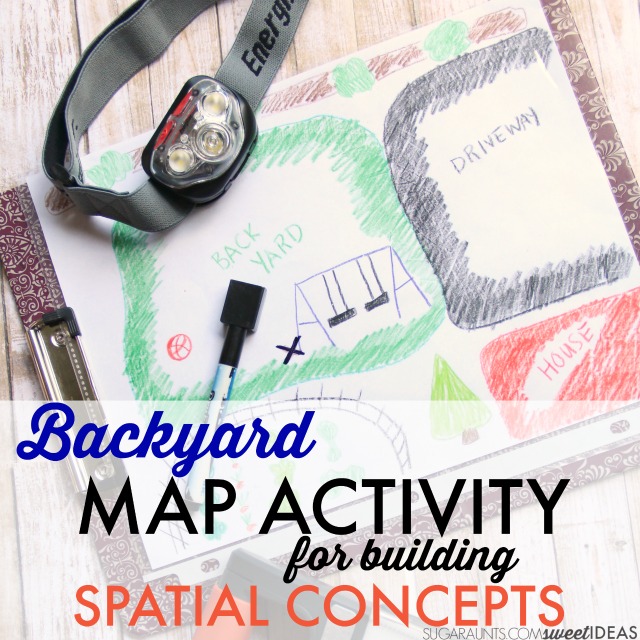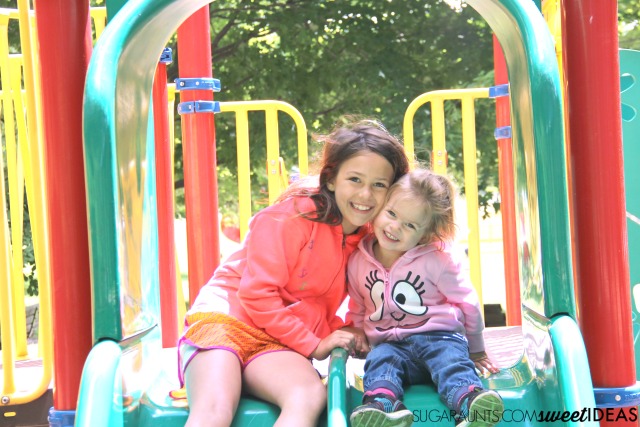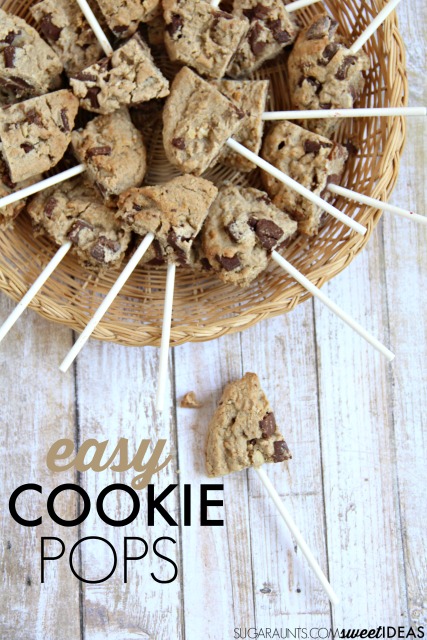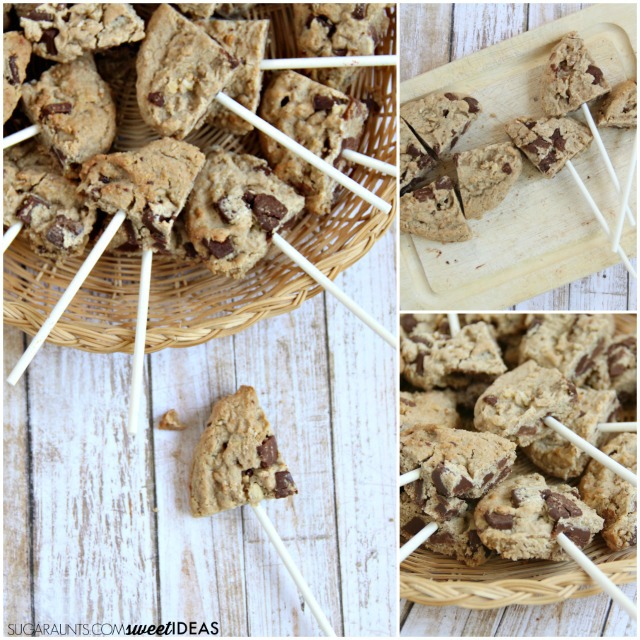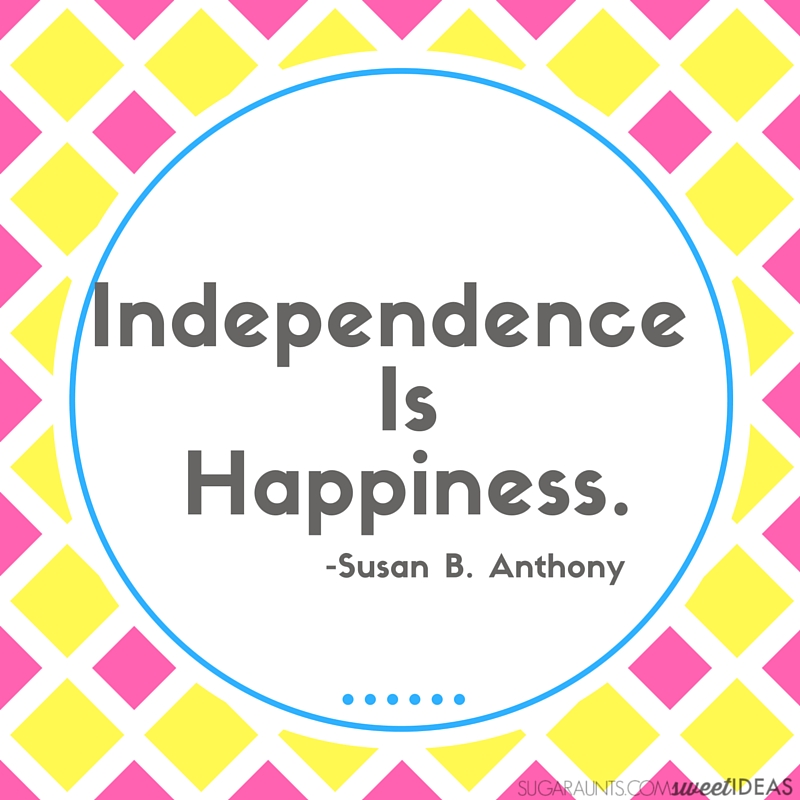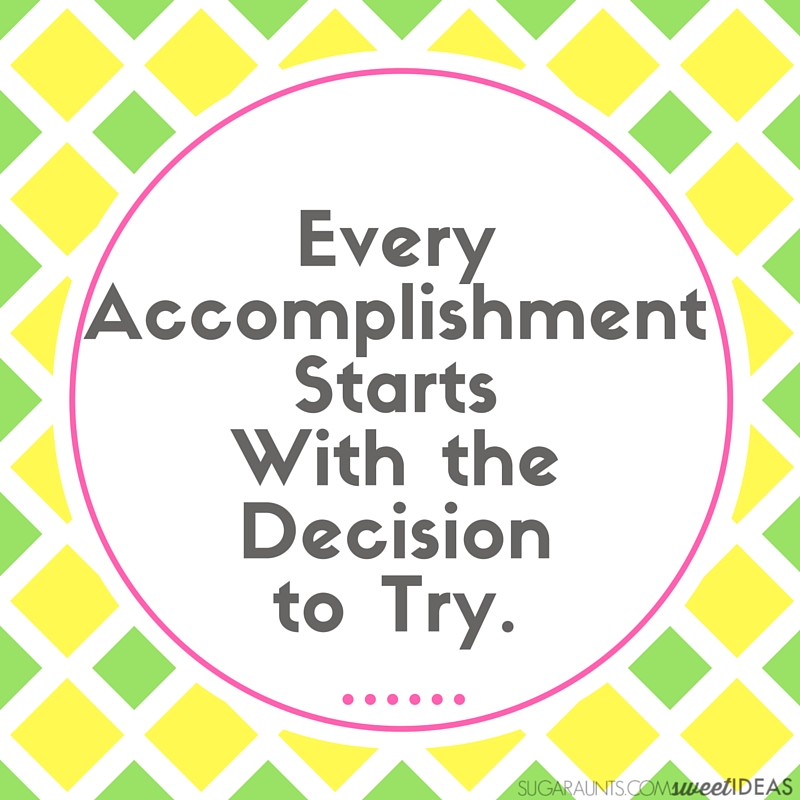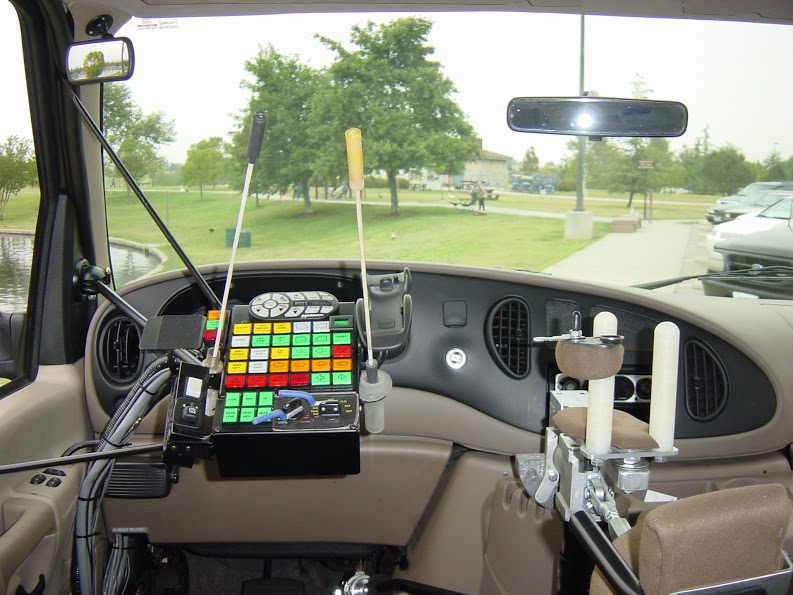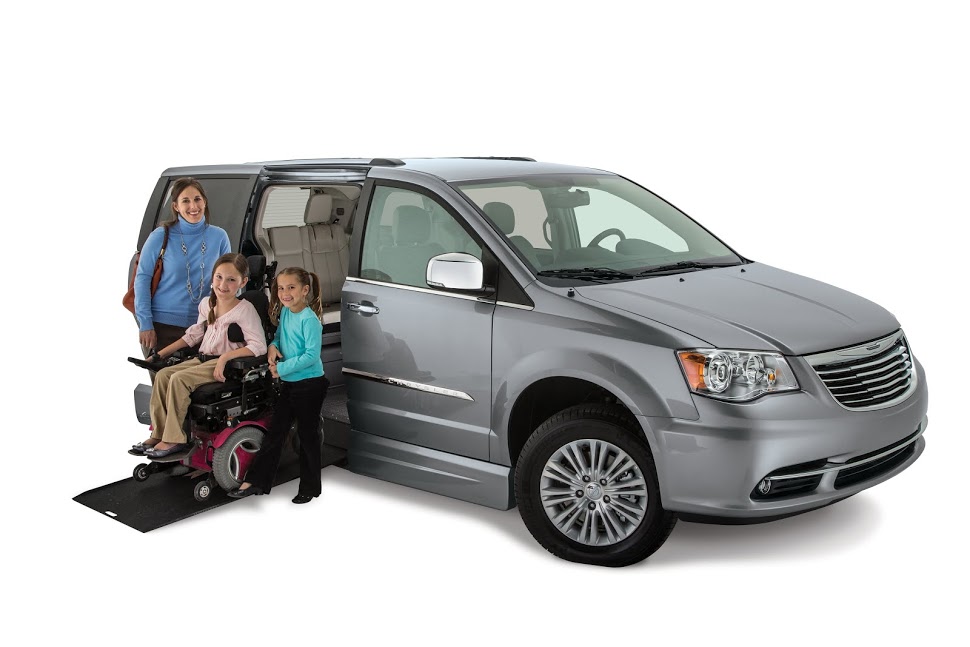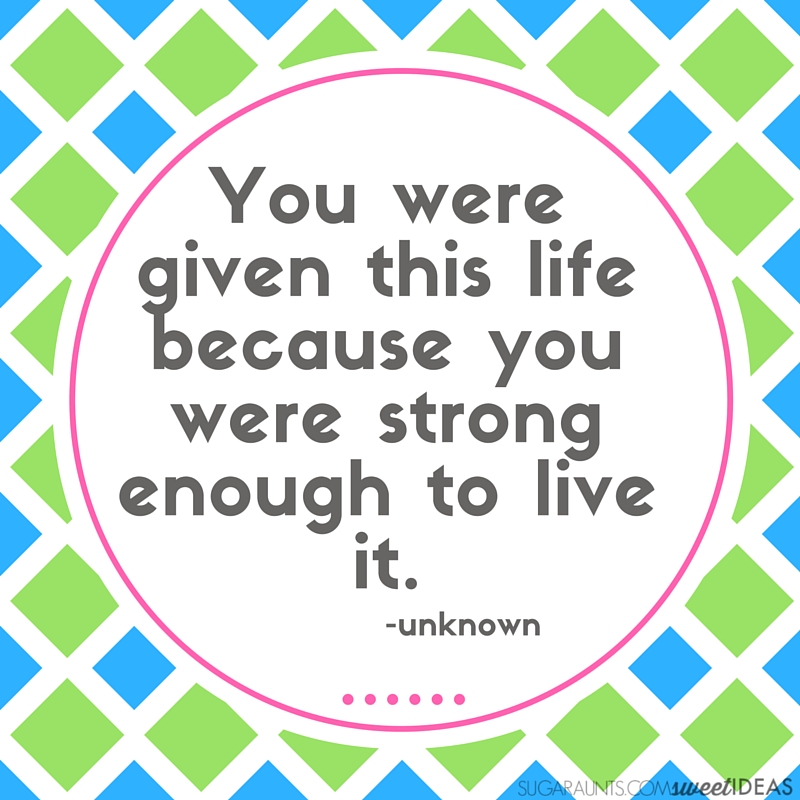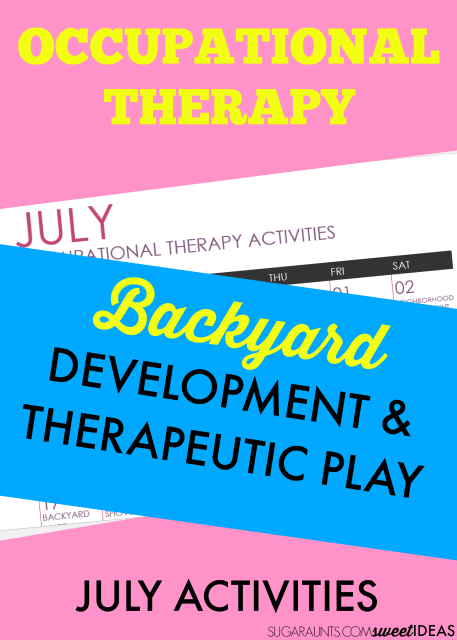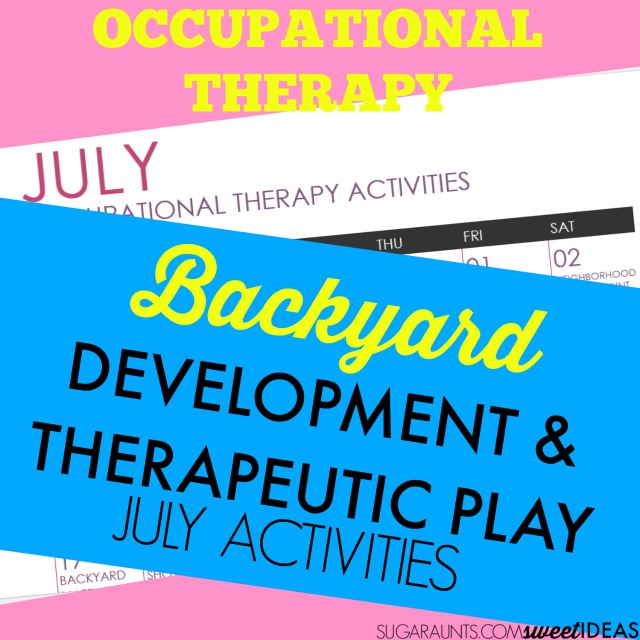Getting four kids tucked into bed is a nightly circus. There are lost toothbrushes, smears of toothpaste, pajama shenanigans, and one last bounce on the beds. Then, it’s lights out and always a few calls for one last hug from mom or dad.
But one thing that helps with my kids is to have a routine in place. A bedtime tooth brushing visual schedule works when there are small kids in the house!
When the kids know what to expect, they know what is happening next. When kids know what is coming up, behaviors can improve. It’s a phenomenon that I’ve seen in potty training three of my children, and it’s something I’ve witnessed with back-to-school morning routines.
So, when things get a little out of control and the bedtime sillies become contagious, there is no better way to round up the sleepy troupes and go over our bedtime routine.
This bedtime routine schedule is kid-made and hands-on (literally!) and the perfect way to get kids to brush their teeth each night as part of the family routine, and an easy way to encourage parents to read out loud with the kiddos…even when getting the kids into bed seems more circus-like than calm!
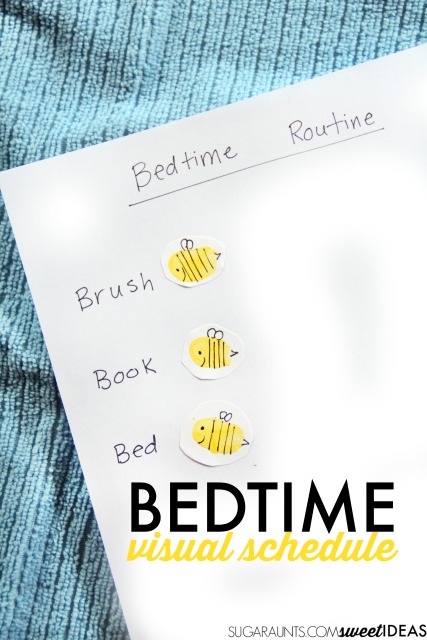
Bedtime Routine Schedule to Nighttime Tooth Brushing and Bedtime Story
Since we’ve had so much luck with our back to school morning schedule story stones, and potty training visual schedule, we decided to try this Finger Print Bedtime Schedule. The fact that kids get to create the schedule manipulatives and use the stickers each night allows kids to really visualize and comprehend each step of their bedtime routine.
When you make your bedtime schedule stickers with your kids, they can see that each step of the family routine happens in a certain order. Use the crafting time as an opportunity to talk about the steps that happen before bed, why it’s important to brush their teeth, and favorite family bedtime stories.
You’ll need just a few materials to make your own hands-on bedtime routine schedule:
Yellow washable paint
Black marker
White label sheet (Sticky back paper that is used to create labels)
Paper for making the chart
On the paper, write out the steps of the family’s bedtime routine. We followed the three steps in our The Three Bees book and wrote out “Brush”, “Book”, and “Bed”.
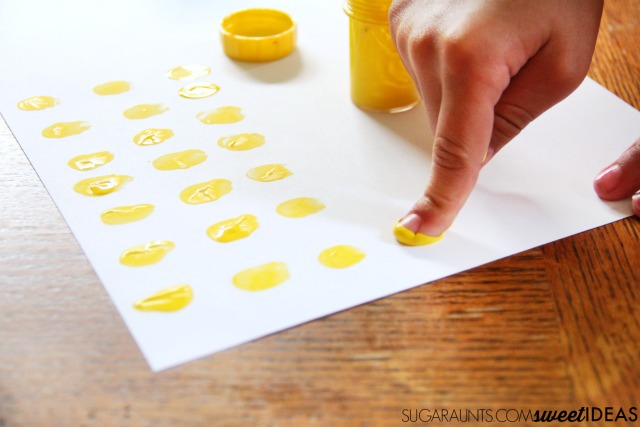
Next, use yellow paint to create fingerprints on the label sheet. Fingerprint projects are an excellent way to sneak in fine motor skills, especially finger isolation.
Once the fingerprints are dry, use the black marker to draw on a smile and bee details. This was a simple job that my eight year old loved to do.
Cut the bees from the label paper and you’ve got instant bee stickers! All you need to do now is wait until bedtime to work your way through the night time routine as a family.
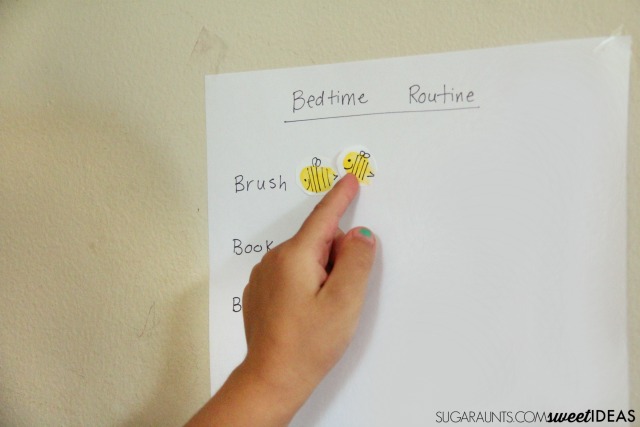
We hung our bedtime routine schedule on the bedroom wall. I had my kids stick a bee sticker after they brushed their teeth and then after we read a book as a family. As they were tucked into bed, my husband and I stuck one last bee sticker beside “Bed” and we turned out the lights.
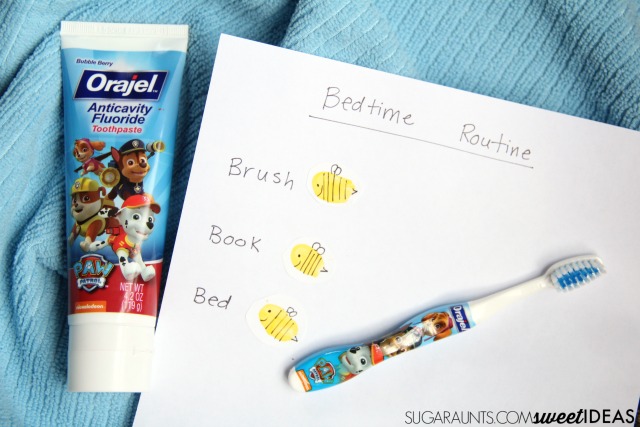
My kids got the chance to try out Orajel™ PAW Patrol™ products and were excited for a fun toothbrush and toothpaste to add to our nighttime routine. I was happy to see their smiles and know that Orajel™ PAW Patrol™ products are a great way to transition your little one(s) to fluoride toothpaste to help protect against cavities to keep young teeth and gums healthy.”
Why use a visual schedule?
Schedule charts are great for kids of all ages and all developmental levels, but they work especially well with children who demonstrate difficulties in the following areas:
- communication
- Learning problems
- difficulty with flexibility
- Behavior problems
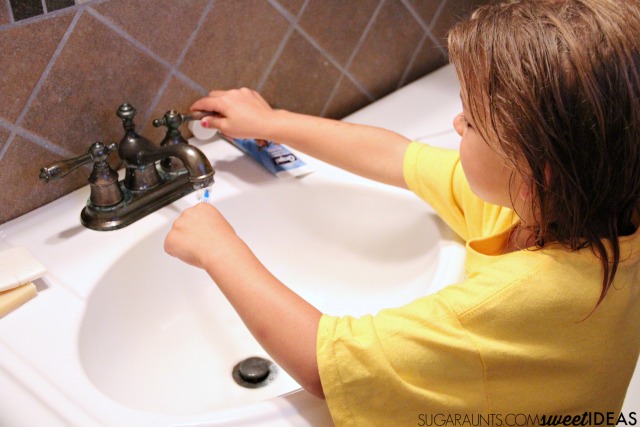
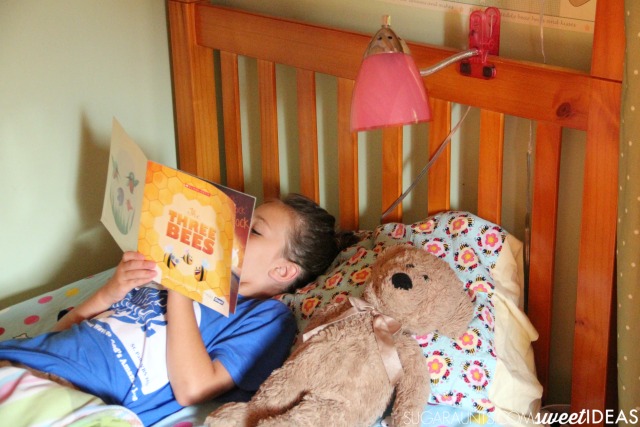
When children are sleepy at the end of the day, it can be overwhelming to follow through with the night time routine. A kid-made visual schedule like these bees is the perfect way to encourage healthy oral hygiene and family time through nightly books. When it becomes routine, it’s easy to turn the night time circus into peace!
I’ve got something fun to share: Scholastic and Orajel are teaming up to encourage parents to make reading out loud to their children and brushing their teeth part of their families’ bedtime routines.
You can visit Scholastic.com/read2me to find tons of resources that are designed to get parents excited about including reading in the nighttime routine. There is even a FREE Scholastic e-book called The Three Bees. This is the book that we read and based our bee routine schedule on.
By visiting scholastic.com/Read2Me, you’ll also find the 100 Best Read-Aloud Books and essential articles from the editors of Scholastic Parents.
Best of all, you can join in on the Read2Me Tonight Challenge where parents take a photo or video of them reading out loud to their children as part of their bedtime routine for a chance to win all 100 Best Read-Aloud Books and a PAW Patrol™ “Brushers Bundle” from Orajel.
Then, simply share that entry via the site to social media, earning an extra chance to win!
When you add reading to your night time routine, you are building a bond and memories that will last a lifetime.
Be sure to visit scholastic.com/read2me and check out the resources there. Use them to help make reading and brushing part of your child’s nighttime routine!
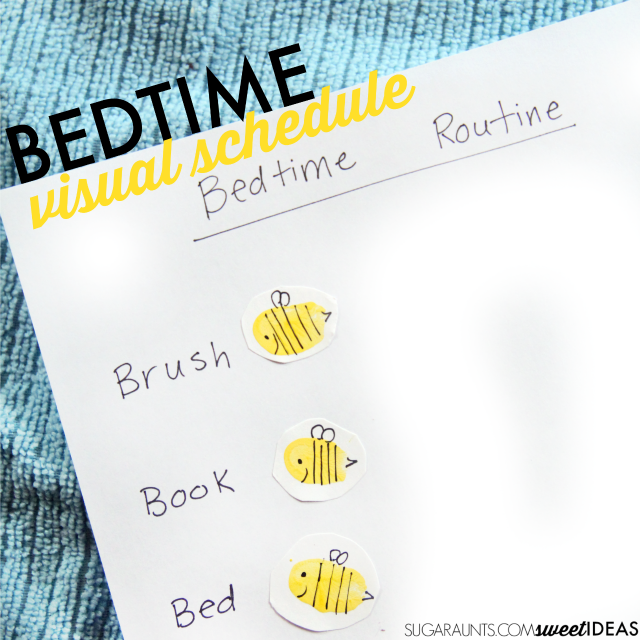
This is a sponsored conversation written by me on behalf of ORAJEL. The opinions and text are all mine.
var ts=document.getElementById(‘ti-pixel-tracker’); var axel = Math.random() + “”; var num = axel * 1000000000000000000; var ti=document.createElement(“img”); ti.style.display=”none”; ti.src=”https://tracking.tapinfluence.com/trk/RMHsA/gvH2S/p.png?p=3OwVP” + String.fromCharCode(38) + “i=DYRFE” + String.fromCharCode(38) + “ord=”+ num + String.fromCharCode(38) + “s=” + encodeURIComponent(document.referrer); ts.parentNode.replaceChild(ti,ts); new TAP.CogFrame(‘/v1/cogs/ded5f9e2-dcb9-11e5-8573-22000a7d00a4/comments’).drop({“program_id”:”333b62e2-a281-11e5-a23d-22000a66c666″,”post_id”:”789611be-3f3b-11e6-acbb-22000a7d00a4″,”host”:”api.tapinfluence.com”,”apiHost”:”api.tapinfluence.com”,”sort_order”:”desc”,”limit”:”20″,”offset”:”0″,”sort_by”:”created_at”,”protocol”:”https://”});


